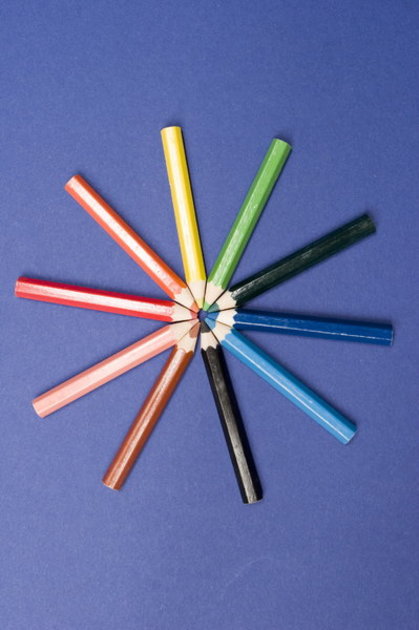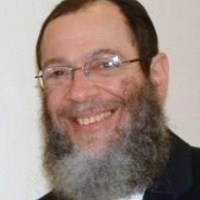
In Parshas Ki Savo (Devarim 27:15-26), the Torah records the curses pronounced by the Kohanim and the Leviim while facing Har Eival. Rashi (27:12) says that each of the k’lolos was preceded by a corresponding bracha, and Rashi at the beginning of Parshas Re-eh (11:26) says these brachos were alluded to in the words re-eh anochi nosain lifnaichem hayom bracha u’klola.
The question remains. Why did the Torah enumerate the k’lolos and leave the brachos to be inferred? Perhaps because the Torah wants us to spend some time generating ideas of what positive brachos could be inferred, rather than spelling it out for us. Since we know that Midah tovah m’rubah m’middas poranus (Sotah 11a), it is reasonable to assume that for every klola there are numerous corresponding brachos.
There is also a source in our liturgy in which we find the negatives spelled out with no mention of the alternative positives, this time involving not brachos and their opposite from Hashem, but negative behaviors on our part.
In the Viduy we have a list of forty four chataim, “sins” that we, in some way, committed. What do we learn from the fact that the term used is chait rather than avon or pesha?
In Shoftim (20:16), slingers from the tribe of Benjamin are described as being so good with their weapon that they can "aim at a hair and not chait."
Here, chait means to miss the target. Chait is a mistake, a failure to do the right thing. In contrast, the terms avon and pasha apply to a conscious choice to do the wrong thing. One who commits an avon or pasha is not seeking forgiveness for an error and searching for a better alternative; one who acknowledges a chait is. The term chait in the Viduy, the first step in the Teshuva process, implies regret for the mistake made, charata.
The culmination of the process is the decision to do better next time, to replace this mistake, this chait, with a better behavioral choice. This is kabbalah al ha’asid. It cannot be accomplished with a firm commitment of “I won’t do that again.” That is the middle step in the Teshuva process, azivas ha’chait. Why doesn’t the process end there? Because that doesn’t work. You cannot live your life “not doing” things. You have to identify alternatives that you will do instead. If you don’t, sooner or later you will revert to the prior undesirable behavior. Your kabbalah al ha’asid will only last if it includes, “here’s what I will do instead.” It follows from the term kabbalah that you are taking on something new. You can’t be m’kabbail the absence of something.
There are two days on which the long Viduy of al chait is said: every year on Yom Kippur and on a wedding day.
Every year we make mistakes. We recount many of them in the Viduy to raise our consciousness of the past and plan alternative choices for the future.
On a wedding day, kabbalah al ha’asid takes on another dimension. Kabbalah al ha’asid always includes consideration of how our choices will affect others. On your wedding day, you think about how your way of speaking, responding, respecting, and appreciating your husband or wife affects them. You say Viduy not only to expunge past mistakes, but to decide how to replace them with nurturing, supportive, reassuring, and uplifting expressions of your love.
Every year on Yom Kippur, you look back and recount the mistakes of the past year. In addition, the Viduy on Yom Kippur can be an opportunity to think back to the Viduy you said on your wedding day. What were you thinking, what were you feeling, what were you dreaming of sharing with your chasan or kallah? What are you thinking and feeling towards him or her now? What dreams have come true? What dreams do you still share? What is your kabbalah al ha’asid about those dreams, about your relationship?
What do you think of your relationship with Hashem? What do you wish you had done differently? Who or what could help you to do better? What is making it hard for you to enlist that help? With whom can you discuss that? Why haven’t you? Are these the things you say to yourself?
I’m afraid to try because if I fail I’ll feel awful.
I’m too ashamed to tell anyone my shortcomings.
I’ve given up on myself and Hashem has probably given up on me.
I want to assure you that you are not saying those things as original thoughts. You're saying words that the yatzer hara put into your mind. One of the most important mistakes to avoid is allowing depressing thoughts to overcome you. The alternative is not to banish depressing thoughts; that is often not a realistic goal. The alternative is to use those thoughts to stimulate you to change the things you do, the way you allocate your time and resources, the chesed you do for others.
If depressing thoughts overwhelm you, chas v’shalom, to the point of despair, seek professional help. B’ezras Hashem, you will get better.
Of course, kabbalah al ha’asid also applies to your relationship with each of your children. Reflect upon what each child’s face looks like when you approach them. Do they look happy when they see you coming or apprehensive?
Do you feel grateful and calm in their presence or tense?
Viduy is about nachas, missed nachas.
Kabbalah al ha’asid is about making choices for the coming year that will make you a greater source of nachas to Hashem, a better partner in sharing nachas with your spouse, and the recipient of increased nachas from each of your children.
Rabbi Ackerman is the author of Confident Parents, Competent Children, in Four Seconds at a Time
Available at bookstores and on Amazon.
He can be reached at 718-344-6575

 Previous
Previous

